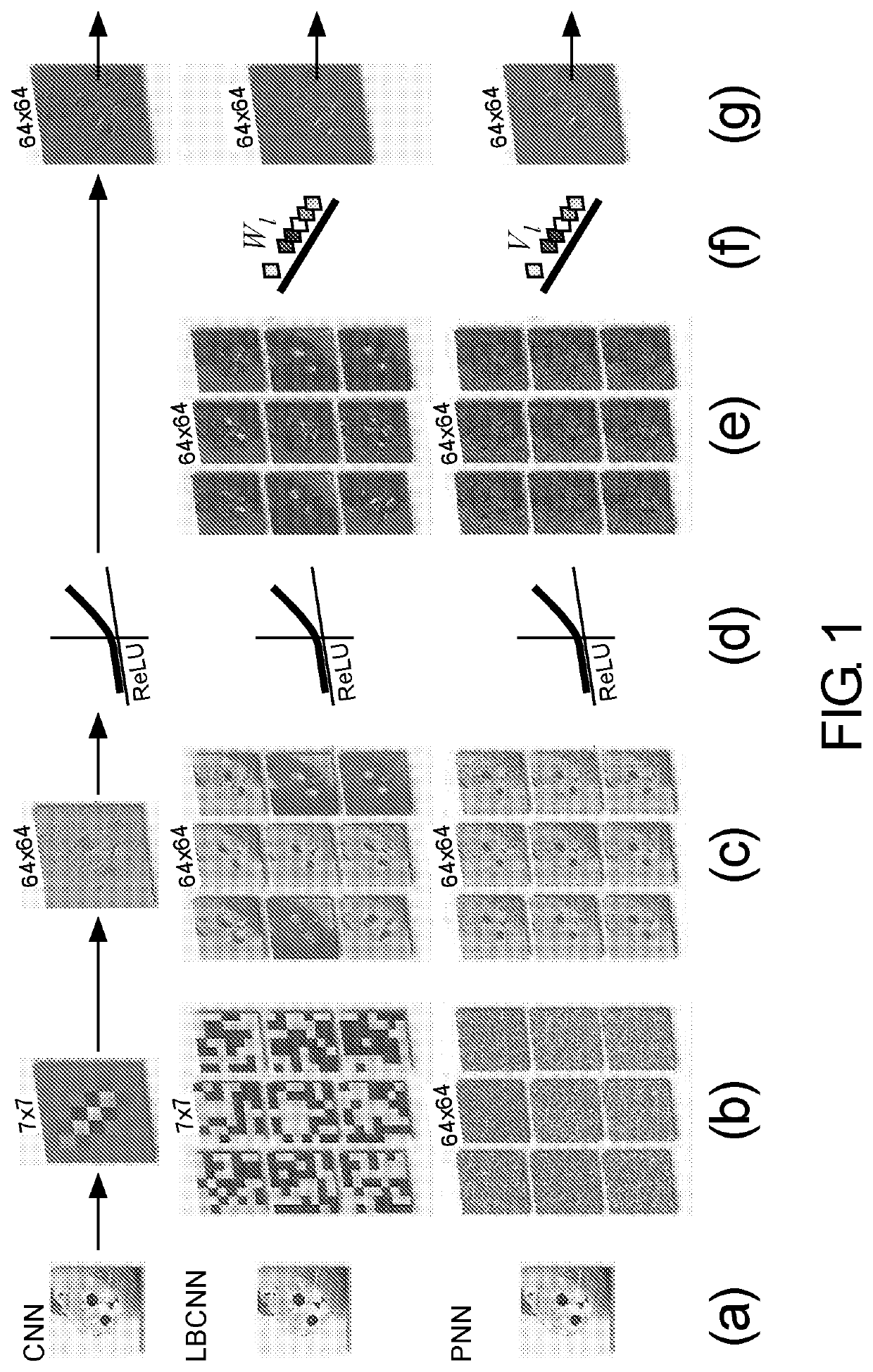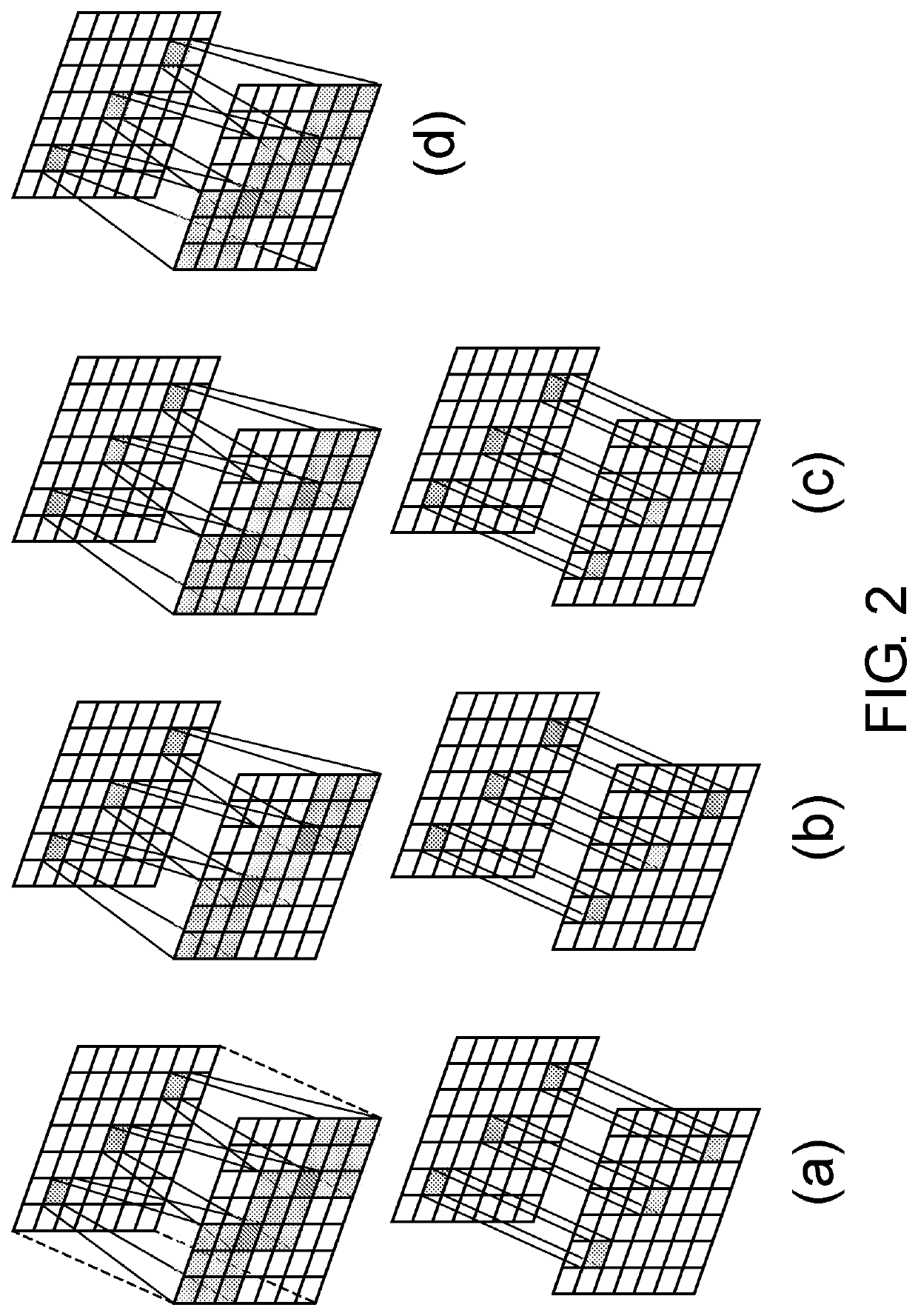Perturbative neural network
a neural network and perturbation technology, applied in the field of perturbation neural network, can solve the problems of computational intensiveness and computational intensiveness of the convolutional layer
- Summary
- Abstract
- Description
- Claims
- Application Information
AI Technical Summary
Benefits of technology
Problems solved by technology
Method used
Image
Examples
Embodiment Construction
[0012]FIG. 1 shows is a schematic representation of a perturbative layer in view (c). The input image (a) will be perturbed with a set of pre-defined random additive noise masks (b), each with the same size as the input image, resulting in a set of noise-perturbed response maps (c). Response maps will go through a non-linearity (d), for example a rectified linear unit (ReLU) function, resulting in activated response maps (e), which are then linearly combined to form one final feature map (g). The random additive noise masks are pre-defined and non-learnable. The only learnable parameters are the linear combination weights (f) used to combine the activated response maps (e) into the final feature map (g).
[0013]In comparison with a convolutional layer, which has a learnable convolutional filter as shown in view (a) of FIG. 1, the PNN is more like a LBCNN, shown in view (b) of FIG. 1, which uses a non-learnable binary mask, whereas the PNN uses a non-learnable ransom noise mask. Both t...
PUM
 Login to View More
Login to View More Abstract
Description
Claims
Application Information
 Login to View More
Login to View More - R&D
- Intellectual Property
- Life Sciences
- Materials
- Tech Scout
- Unparalleled Data Quality
- Higher Quality Content
- 60% Fewer Hallucinations
Browse by: Latest US Patents, China's latest patents, Technical Efficacy Thesaurus, Application Domain, Technology Topic, Popular Technical Reports.
© 2025 PatSnap. All rights reserved.Legal|Privacy policy|Modern Slavery Act Transparency Statement|Sitemap|About US| Contact US: help@patsnap.com


